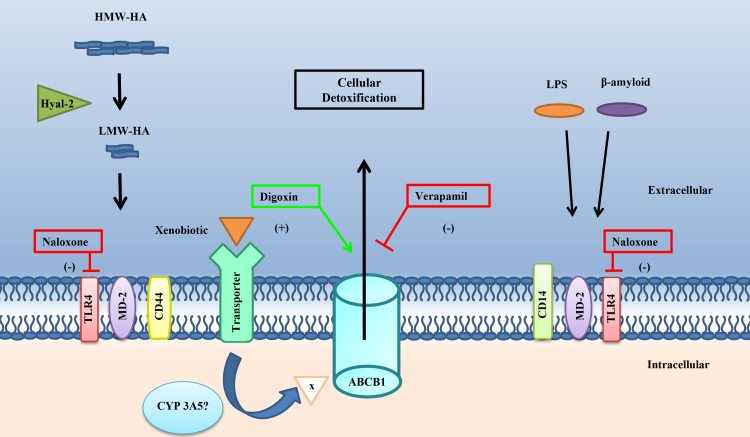Figure 8.
Diagram depicting the possible activation of TM detoxification of xenobiotics. The schematic illustrates the multiple receptors involved in the uptake and removal of potentially toxic substances in aqueous. First, two separate signaling pathways activate TLR4. The classic CD14-MD2-TLR4 complex is activated by the agonists lipopolysaccharide (LPS) and β-amyloid. The alternate complex of CD44-MD2-TLR4 is modulated by low-molecular-weight hyaluronic acid (LMW-HA). ABCB1 is a first-line defense and is rapidly upregulated by extracellular, e.g., β-amyloid or dephosphorylated lipopolysaccharide (LPS-p), and intracellular stress arms [57]. Xenobiotics enter through several different organic anion transporter proteins including OATP, OAT, and OCT [56]. The xenobiotic is then shuttled to the endoplasmic reticulum where cytochrome P450 3A5 or other cytochrome P450 enzymes process the xenobiotic. The second step of the detoxification pathway is ABCB1 efflux on the inactivated xenobiotic. Prolonged or overwhelming stressors, e.g., lactate accumulation, aging, or cytokine stimulation, may overwhelm the ABCB1 defense mechanism leading to faulted removal of xenobiotic, activation of NF-κB [52], and cell death. Modulators of ABCB1 are digoxin, verapamil, and the TLR4 antagonist, naloxone, which inhibits both signaling pathways.

